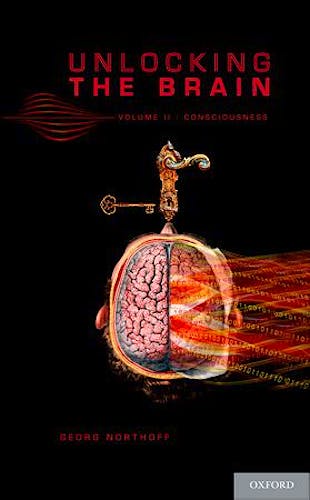

No hay productos en el carrito



Unlocking the Brain, Vol. II: Consciousness
Northoff, G.
1ª Edición Enero 2014
Inglés
Tapa dura
560 pags
1462 gr
19 x 26 x 4 cm
ISBN 9780199826995
Editorial OXFORD
LIBRO IMPRESO
-5%
160,48 €152,46 €IVA incluido
154,31 €146,60 €IVA no incluido
Recíbelo en un plazo de
2 - 3 semanas
About this book
- One of the first volumes to explore the linkage between coding and consciousness.
- Presents a new and novel characterization of the brain's intrinsic activity in terms of its spatiotemporal structure.
- Provides a unique transdisciplinary approach between neuroscience, psychiatry, and philosophy.
Neuroscience has made considerable progress in figuring out how the brain works. We know much about the molecular-genetic and biochemical underpinnings of sensory and motor functions. Recent neuroimaging work has opened the door to investigating the neural underpinnings of higher-order cognitive functions, such as memory, attention, and even free will. In these types of investigations, researchers apply specific stimuli to induce neural activity in the brain and look for the function in question. However, there may be more to the brain and its neuronal states than the changes in activity we induce by applying particular external stimuli.
In Volume 2 of Unlocking the Brain, Georg Northoff addresses consciousness by hypothesizing about the relationship between particular neuronal mechanisms and the various phenomenal features of consciousness. Northoff puts consciousness in the context of the resting state of the brain thereby delivering a new point of view to the debate that permits very interesting insights into the nature of consciousness. Moreover, he describes and discusses detailed findings from different branches of neuroscience including single cell data, animal data, human imaging data, and psychiatric findings. This yields a unique and novel picture of the brain, and will have a major and lasting impact on neuroscientists working in neuroscience, psychiatry, and related fields.
Readership: Neuroscientists, philosophers, psychiatrists, computation researchers, biologists, as well as undergraduate, graduate, and postgraduate students interested in these areas.
Table of contents
List of Figures
Preface
Introduction to Volume II
Part V Spatiotemporal Continuity and Consciousness
Chapter 13: Midline regions and 'Stream of Consciousness'
Chapter 14: Slow cortical potentials and 'width of presence'
Chapter 15: Temporal nestedness and 'duration bloc'
Chapter 16: Functional Connectivity and 'Inner space consciousness'
Chapter 17: Glutamate, GABA, and 'Inner time and space consciousness'
Part VI Spatiotemporal Unity and Consciousness
Chapter 18: Resting state and Pre-Phenomenal Unity
Chapter 19: Gamma and Phenomenal Unity
Chapter 20: Natural statistics and 'environment-brain unity'
Chapter 21: Unity and Subjectivity
Chapter 22: Unity and subjectivity in schizophrenia
Part VII Spatiotemporal Organisation and Consciousness
Chapter 23: Resting state and Self-specificity
Chapter 24: Self-Specificity and Self-perspectival organisation
Chapter 25: Resting state and pre-intentional organisation
Chapter 26: Neuro-Phenomenal Evidence - Dreams and Mind wandering
Chapter 27: Neuro-Psychiatric Evidence - Schizophrenia and Depression
Part VIII Spatiotemporal Quality and Consciousness
Chapter 28: Resting state and Qualia
Chapter 29: Rest-Stimulus interaction and Qualia
Chapter 30: Neuronal transfer and Qualia
Chapter 31: Affect and Qualia
Chapter 32: Body and Qualia
Epilogue: Keyholes in the brain's door to consciousness
Appendix: Related Issues
Appendix to Introduction/Appendix 1: Brain and Consciousness
Appendix to Part I/Appendix 2: Brain and Time
Appendix to Part II/Appendix 3: Brain and Unity
Appendix to Part III/Appendix 4: Brain and Self
References
Index
© 2026 Axón Librería S.L.
2.149.0